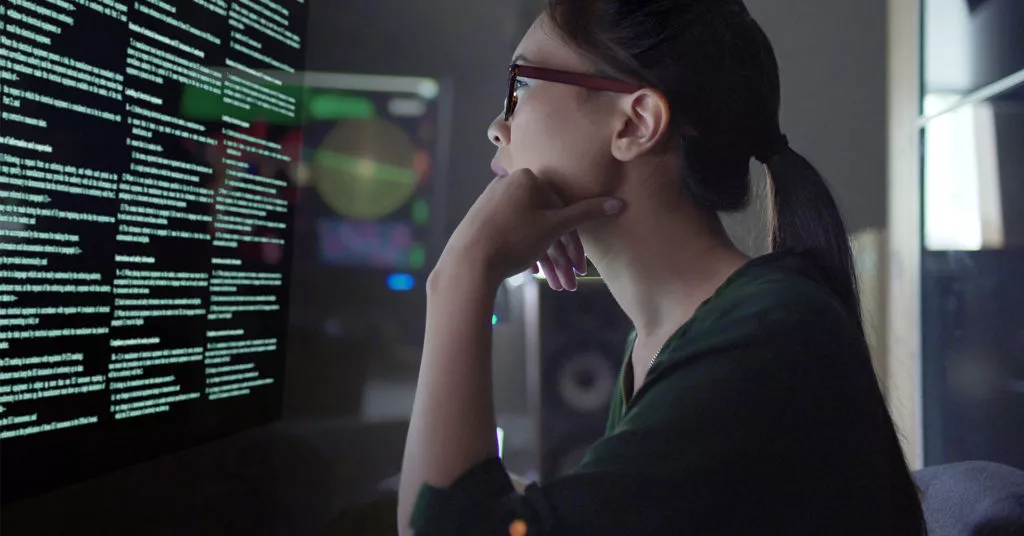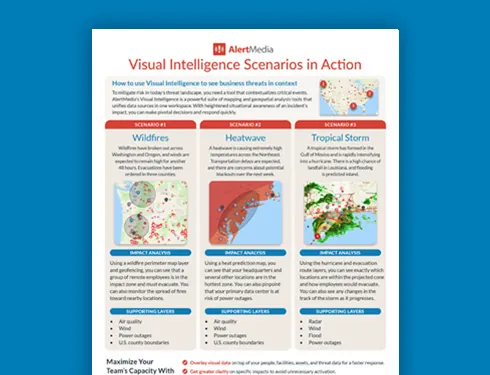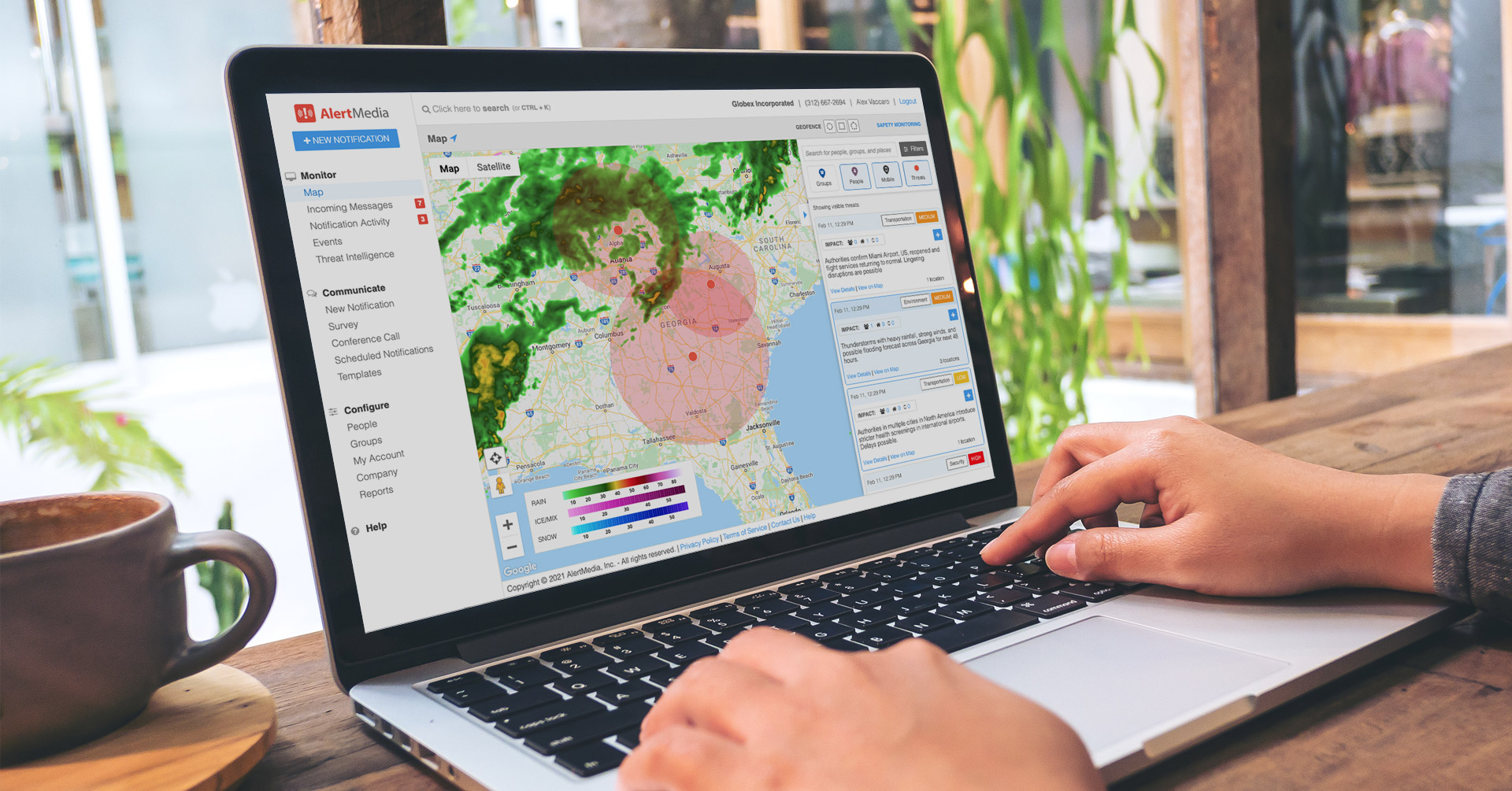
How Situational Intelligence Mitigates Risk
Situational intelligence is when knowledge meets planning. Learn how situational intelligence can improve your emergency decision making and mitigate risks to your employees and business.

In February of 2021, the state of Texas suffered one of its worst winter weather events in decades. An extremely rare confluence of three winter storms stressed the usually warm state’s unprepared energy grid and caused one of the largest electrical utility failures ever seen in Texas history.
Millions of people were left without power or gas for almost two weeks, and very few people were prepared to handle the myriad challenges such a breakdown of infrastructure causes. Food, safe drinking water, and warmth were the largest concerns of those enduring the freeze without electricity, and most pantry stockpiles were depleted once refrigerated items spoiled. Many Texans felt abandoned by their government, as even essential workers like first responders couldn’t do their jobs. And yet, many were able to find help in an unusual place: the local grocery store.
H-E-B, a regional grocer prominent across Texas, used its supply chain and crisis management skills to provide their communities with food, water, and other amenities, often for free or at a reduced cost. HEB has gained a reputation among Texans for its impeccable disaster readiness abilities and prudent risk management. But how was HEB able to serve its communities so effectively during a natural disaster? The secret is situational intelligence.
By combining extremely comprehensive information-gathering practices with integrated emergency planning, the grocery chain was able to flex its logistical muscles and distribute critical supplies to Texans. This is the heart of situational intelligence: where knowledge meets preparation. Stick with us to learn more about what situational intelligence is and how it can help you create a safer and more resilient organization.
Download The Future of Threat Intelligence: Where AI Meets Human Insight
What Is Situational Intelligence?

Put simply, situational intelligence is a term used to describe a person or organization’s ability to anticipate and react to any given problem. It encompasses situational awareness, but also includes the knowledge of how to respond to a particular situation. It is important because it can help determine what is happening, what response is needed, and when. For example, if a power company is faced with a situation where there is too much electricity demand for the supply to handle, their situational intelligence is a synthesis of two different parts:
Information gathering: If you don’t have information on the situation, you’re basically blind to what’s happening. You need to have ways to monitor and report key risk intelligence in real-time. In the case of the power company, information from meters and transformers across their service area, as well as knowledge of which of their customers are without power, gives them an accurate visualization of the problems they face.
Ready-made plans: As soon as you know what issues you face, you have to start acting immediately to mitigate its effect on your people and operations. In an emergency, there’s no time to create a plan from scratch, and if you did, it would probably be rushed and would overlook important details or responsibilities. Instead, identify the most likely problems that you would face with something like a business threat assessment and create comprehensive response plans for each of them.
The Elements of Situational Intelligence
Situational intelligence can be broken down further into three parts:
Detect
Situational intelligence begins with a survey of your situation. In order to analyze the issue, you first have to take into account relevant information.
As in the power company example above, larger amounts of data can be helpful in getting the full picture of the situation you’re facing. However, it’s perhaps more important to filter out the “noise,” or the data that isn’t relevant to your task. The key is striking a balance between highlighting relevant information and discarding irrelevant information. This is also known as “information management,” and is the “situational awareness” portion of situational intelligence.
Understand
Once you have identified the important information in your situation, you need to take a closer look at the information you gathered within the context of your organization and/or role. For example, if you’re an employee at the aforementioned power company, you might already know that home meter reading is crucial to performing your job.
But even if you’ve selected the proper set of meter reading data, that information is useless without context. Maybe they also need to know the average readings for the past month, or the safe amount of load on a given circuit. Good situational intelligence requires contextual understanding when it comes time to do something about the problem at hand.
Act
Once you’ve ascertained the scope of the situation and know the ways in which things have gone wrong, decision-makers now have to figure out what exactly you’re going to do to fix the problem. For our electric company friend, they might decide to turn off power to a particular circuit on the grid, so that another circuit can have a chance to use electricity.
Preparing for a stressful emergency can be challenging, but if done properly, it can lead to better decisions. It can also provide a learning experience: if things don’t turn out as well as they could have, you now have another data point to make an informed decision next time.
There is another way to think about this process known as the OODA loop.
The OODA Loop
In a military setting, lapses in judgment can have deadly consequences, which is why so much military thinking is devoted to developing ways for soldiers to improve their situational intelligence. One of the most successful situational intelligence models that have found success both on and off the battlefield is known as the OODA Loop. OODA stands for Observe, Orient, Decide, Act. It was developed by John Boyd, a U.S. Air Force Colonel, to help illustrate why some fighter pilots were more successful than others. Through supreme situational intelligence, high-performing pilots were able to take in information, make sense of it, choose a course of action, and make it happen. Doing so quickly and accurately became known as the “Ace Factor,” and it showed that higher levels of situational intelligence correlate with success.
Since then, the OODA loop has found success in the business and operations world as well and can be a great boon to your people’s confidence when facing dangerous or unusual situations. You too can draw on these models to train your people to increase their situational intelligence and create a more nimble organization.
Risk evaluation in situational intelligence
Risk evaluation is the ability to analyze the severity of a given threat once it emerges—and this is a key factor in situational intelligence, specifically where the “detect” and “understand” elements merge. At a certain level, this can be intuitive. An active shooter situation is obviously a high-severity threat. A thunderstorm is usually low severity. But sharp risk evaluation plays the biggest role in assessing situations where threat severity isn’t so simple or in ongoing assessments of situations going on around you.
Signs of LOW risk evaluation
When you have low risk evaluation capabilities, you may struggle to consider how seemingly far-off threats may impact your operations. For example, imagine a hurricane started brewing off the east coast. Companies directly in the path of the storm would rightly start evaluating the severity of the threat. But companies located in, say, Kansas might assume the threat has no relevance to them.
Often, this could not be further from the truth. Is the company going to have any business travelers to the East Coast in the next month? Or, for that matter, leisure travelers? Any trips that are scheduled need to be reconsidered. What about the company’s larger supply chain? If any suppliers are located in the path of the storm, or if their logistics pass through a port on the coast, they need to prepare for disruptions. The storm could also impact demand for the company’s products or services. Even though the storm might be 1,000+ miles away from headquarters in Kansas, it could end up being a high-severity threat.
Signs of HIGH risk evaluation
When you have high risk evaluation capabilities, you may always be thinking “two steps ahead” as to how various risks might affect your people and operations. Taking the hurricane example, a company with exemplary risk evaluation would immediately recognize the severity of the risk. The company would reevaluate any business trips to the East Coast and warn all employees of the dangers of leisure travel to at-risk areas as well. They would immediately open a dialogue with suppliers that could be impacted so they’ll know what to expect and prepare for. Identifying these connections early would allow the company to mitigate the impacts of the risk before anything materialized.
How to improve your risk evaluation
Improving risk evaluation is easier said than done, and it will go a long way toward improving overall situational intelligence. Navigate this process one step at a time to improve your organization’s risk evaluation if it’s an area where you struggle.
Start by asking these questions:
- Could this threat jeopardize the physical safety of our employees?
- > At headquarters
- > At other office locations
- > Traveling for business
- > Traveling for leisure
- Will this threat impact our suppliers?
- Will this threat impact the demand for our product/service?
- What is the worst-case scenario for this threat?
Having a good threat assessment and access to risk intelligence systems is the best way to quickly improve risk evaluation—because these resources do the hard work for you. By relying on expert sources and trusted analysts, the system assigns a “risk severity” to every identified threat. This means you don’t have to do the difficult work of researching each threat and manually determining severity; instead, you can take the severity as determined by the analysts and simply assess how that translates to your organization.

Training Situational Intelligence
Now that you know why situational intelligence is so important, let’s look at some of the ways that you can ingrain strong practices into your organization’s safety culture.
Review previous incidents
Experience is often the best teacher, and if you’re looking for ways to incrementally improve your emergency response skills, you should review past mistakes and develop ways to identify those problems earlier next time. Another tool borrowed from the military, after action reports are very effective means to reflect on your experiences as a business and learn from past mistakes and missed opportunities.
Practice makes prepared
While training to respond to emergencies, it’s important to stay at the top of your game. Many of the contingencies you’re preparing for will likely only come about once in a while, so to keep from getting rusty, try simulating these scenarios with your team. A popular way to do so is with tabletop exercises, which are exactly what they sound like. Your team sits down at a table and acts out their response to a hypothetical scenario in a low-stress, friendly environment. While doing these, you’re able to practice responding to an event, but you also have the opportunity to point out any issues or concerns you have. It’s much easier to address those concerns during downtime than during an active emergency!
Cyber situational intelligence
An important form of situational intelligence is that which takes place online. We’ve been reminded by events like the Colonial pipeline ransomware cyberattack that dangers abound in cyberspace, but situational intelligence can serve us well here. By making your people aware of the potential dangers—such as password phishing—that surround us online, you’re mitigating any potential risk of cyberattack when your people are working online.
Contributing to your culture of safety
When developing or improving your situational intelligence practices, or updating any safety-related system, you’ll eventually realize that safety isn’t just a task that can be completed. It’s a continuous process that involves everyone so that your entire organization is invested from the ground up in creating a culture of safety. In doing so, you not only make sure that you protect your people and operations but also increase your morale. When your employees see that you truly care about their wellbeing, they’ll be far more likely to show your company the same care in return.
How Technology Increases Situational Intelligence
The right tools make any job easier, and managing situational intelligence is no different. There are two main areas where technology can greatly improve your safety outcomes:
- Threat intelligence: The world is a big place, and it’s extremely difficult to keep an eye out for all of the things that might potentially threaten your people or business. However, threat intelligence systems can do much of the legwork for you by aggregating known threats from vetted sources, as well as local information like social media, and showing you who among your team is at risk. This can bolster the information you’re able to take in and allows you to focus more time on responding instead of watching feeds and media outlets.
- Mass notification: Once you have the information you need to communicate, you need a platform to do so. A multichannel, two-way mass communication system is necessary if you intend to quickly and easily keep in touch with your employees across different communication channels and formats, and allow them to inform you of vital updates in return.
AlertMedia has helped thousands of organizations across the world increase their situational intelligence and mitigate risks to their employees. Let us know if you’d like to see how we can help you do the same.




